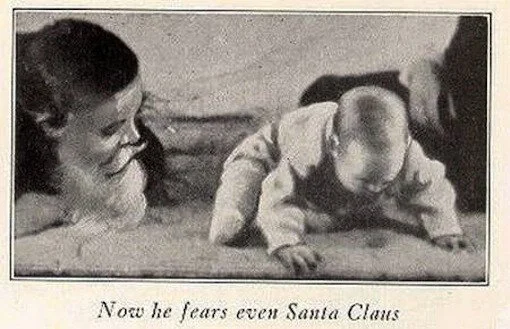Fear Is As Fear Does
I recall arriving at a South African mining construction site. There in front of me, painted in huge letters on the water tower, was the phrase: “DON’T FEAR SAFETY.” How do people get to a point where they fear safety? How can something like a checklist or an SOP or a safety manager create fear?
Our body is equipped with automatic protective wiring that automatically reacts to scary stimuli with a fear response. This Fear reaction can then be transferred to otherwise neutral stimuli through experience. More than a century ago a guy named Watson took a baby he called “Little Albert” and exposed him to a mouse which Albert played with and pleasantly giggled. Then out of the blue, Watson made loud startling noises behind Albert whenever he had the mouse resulting in a crying baby. Afterward Albert would be fearful whenever he saw a mouse, a rabbit and even a stuffed fuzzy doll.
Let’s consider how this happens in your workplace. A guy I’ll call Darryl took me on a tour of his plant in Arizona. Certainly he was on his best behavior as he introduced me to his different crews of workers. I was struck by how workers reacted when he entered their space. They would look up, get wide eyed, and then quickly turn back to their work. When Darryl walked up to workers I saw their shoulders arch as their bodies tightened. Others grimaced as if a sour stomach cramped up. I didn’t think they were happy to see Darryl?
I learned that a woman named Patricia had a broken guard on her loom and removed it because it was getting in her way (planning to get it fixed at the end of her run). She got startled by an angry bark as Darryl started a loud diatribe about how careless and unsafe Patricia was. Patricia’s body reacted naturally by tightening up and fouling her stomach (the fear response). This reaction became associated with her boss Darryl.
In contrast, I took a tour of a steel smelting plant with a safety guy named Tom. What caught my attention was how the folks lit up when they saw him. Tom had intentionally associated his presence with a pleasant experience every time he interacted with his workers. He smiled, called them by name, asked about their kids or motorcycle, and always praised them for something they were doing to make the plant safer. He always left with a smile, a thumbs up, and “thanks.” As we walked toward his workers they would smile and relax.
How did Tom and Darryl elicit these different responses from workers? Over time their behavior while interacting with their workers shaped an automatic response. A new employee meeting Tom gets asked about her family and, in response, experiences a pleasant bodily reaction when thinking about her kids. What Tom did, probably without knowing it, is pair himself with pleasant feelings (the opposite of fear). Over time, just his presence elicits the same positive bodily reaction. And for that, when he tours the plant and asks to discuss some at-risk behaviors, he generally gets a lot of interaction, even if it was a hard topic to discuss.
What Darryl does, certainly unknowingly, is pair himself with fear. It doesn’t take long for workers to experience these body responses just seeing him across the parking lot.
Being nervous and afraid of a safety pro is a no-win situation because workers begin to practice avoidance of this fear response…avoidance of Darryl. Darryl becomes a kind of King Midas (who could touch anything and it turns to gold) in reverse. Anything Darryl is associated with also is something to be avoided. Do folks suddenly disappear when your safety manager comes around? Do workers sit in the back of the meeting room during safety training? Do they avoid reporting close calls and minor injuries? Avoidance.
Fix this, associate yourself with pleasant feelings and your touch will be golden.


